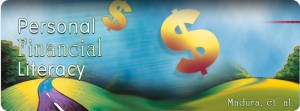Dear Kyle Mathews, High School Principal:
Thank you so much for supporting blogging in the classroom over the last few years, allowing me to use blog interaction as one of my Personal Growth goals for the 2013/14 school year. This upcoming school year will be my fourth since we got the grant for a classroom set of iPads, but only my second using blogging as a educational strategy in Geometry, Discrete Math and AP Statistics. Since we’ve used our recent increase in funding to increase technology in the classroom, I wanted to provide as many resources as I can for the teachers who have the classroom sets of Chromebooks and iPad carts this year.
Blogging allows for students to synthesize information, have conversations outside of the classroom and have a “voice” that can be more thoughtful. It allows students to reflect on their own learning process, while allows teachers to track student response and reflection. Blogging can be asynchronous: I’ve asked all my incoming AP Statistics students to post a misuse of statistics that they’ve found in the contemporary media. They will complete this task, using the summer readings and their own explorations of media, post to the blog whenever they complete the assignment and then reflect on classmate posts anytime before school begins. Thus, a class that hasn’t met yet and that has wildly different summer schedules will still be having an academic “conversation” via blog. Blogging can be synchronous: in my Geometry class students will work together to solve a problem in real time, so that they can build on other students’ ideas in order to come to a group solution.
Every teacher at Peak to Peak has a SchoolFusion blog attached to the Peak to Peak website, but now that Boulder Valley School District has moved to Google, they have approved Blogger (and it no longer gets stuck in the web filter!) Blogger offers even more opportunities for dynamic learning, since teachers can embed videos, link blogs and specify content in ways perfect for the classroom; this is the classroom blog site that I’ve been using for the past year and plan to use in 2014/15. Other great uses for blogs that can help my colleagues design dynamic classroom practices are as follows:
- A wonderful “workshop” opportunity where students post writing, ideas or solutions and then offer each other feedback.
- An opportunity for formative assessment as students demonstrate understanding by synthesizing material in response to a prompt.
- A way to have classroom readings be a more dynamic experience as students share thoughts and questions on embedded reading.
- A chance for students to bring their own background knowledge and expertise to a topic by providing links.
- A great review strategy, where each student is assigned one aspect of curriculum to create review material for and then they can ask each “expert” questions or add to the information.
- An ideal forum for a debate, where the teacher poses a question and students must take a position and support it with evidence.

